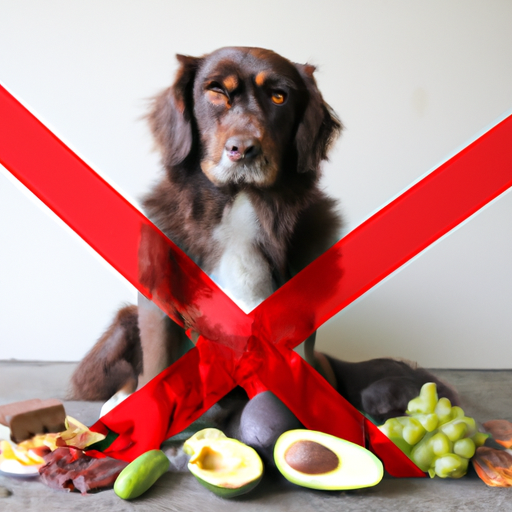As a caregiver, you’re always looking out for the best interests of those in your care. This doesn’t just extend to people, but to pets as well! Today, we’re going to talk about dogs – those loyal, loving companions that fill our lives with joy – and the foods they absolutely should not eat.
1. Chocolate
Despite being a delicious treat for humans, chocolate can be deadly for dogs. This is due to theobromine, a compound toxic to dogs.
- Dark chocolate is the most dangerous, followed by milk chocolate, then white chocolate.
- Symptoms of chocolate poisoning include restlessness, rapid breathing, muscle tremors, and seizures. If you suspect your dog has eaten chocolate, contact your vet immediately.
2. Grapes and Raisins
The exact cause is unknown, but grapes and raisins can lead to kidney failure in dogs.
- Even a small amount can make a dog sick.
- Symptoms include vomiting, lethargy, and depression.
3. Onions and Garlic
Onions and garlic in all forms – raw, cooked, powdered, or dehydrated – can damage a dog’s red blood cells, leading to anemia.
- An occasional small dose is unlikely to cause problems, but regular consumption can be harmful.
- Symptoms include weakness, vomiting, and breathing problems.
4. Coffee, Tea, and Other Caffeine
Like chocolate, caffeine can be fatal for dogs and there is no antidote.
- Symptoms of caffeine poisoning include restlessness, rapid breathing, heart palpitations, muscle tremors, and seizures.
5. Alcohol
Alcohol has the same effect on a dog’s liver and brain as it does on humans but it takes far less to do its damage.
- Just a small amount can cause vomiting, diarrhea, central nervous system depression, problems with coordination, difficulty breathing, coma, and even death.
6. Avocado
Avocado contains Persin, a toxin that can cause vomiting and diarrhea in dogs.
- The large seed also poses a choking hazard.
7. Macadamia Nuts
Even small amounts of macadamia nuts can be fatal to dogs.
- Symptoms usually appear within 12 hours and can include weakness, depression, vomiting, tremors, and hyperthermia.
8. Xylitol
Xylitol is a sweetener used in many products, including gum, candy, baked goods, and toothpaste. It can cause insulin release in most species, leading to liver failure.
- The increase in insulin leads to hypoglycemia.
- Initial signs include vomiting, lethargy, loss of coordination, and can progress to seizures.
| Food | Toxic Compound | Symptoms |
|---|---|---|
| Chocolate | Theobromine | Restlessness, rapid breathing, seizures |
| Grapes/Raisins | Unknown | Vomiting, lethargy, depression |
| Onions/Garlic | Disulfides and sulfoxides | Weakness, vomiting, breathing problems |
| Caffeine | Methylxanthines | Restlessness, rapid breathing, tremors |
| Alcohol | Ethanol | Vomiting, CNS depression, difficulty breathing |
| Avocado | Persin | Vomiting, diarrhea |
| Macadamia Nuts | Unknown | Weakness, depression, vomiting, tremors |
| Xylitol | Xylitol | Vomiting, lethargy, loss of coordination, seizures |
FAQs
Q: My dog ate some chocolate, but seems fine. Should I still call the vet?
Even if your dog seems fine, it’s always best to give your vet a call if you suspect they’ve eaten chocolate.
Q: Are any fruits or vegetables good for dogs?
Many fruits and vegetables are safe for dogs! Apples, bananas, cucumbers, and carrots are all fine in moderation.
Q: Can dogs eat peanut butter?
Yes, dogs can eat peanut butter as long as it doesn’t contain xylitol. Always check the label before sharing!
Q: How can I prevent my dog from eating harmful foods?
Keep harmful foods out of your dog’s reach, and make sure all family members know what foods are off-limits.
Remember, you as a caregiver have a responsibility to keep your furry friends safe. Knowledge is power, and understanding these dangerous foods is the first step in preventing accidental harm. Always consult with a veterinarian if you suspect your dog has ingested a harmful substance.



